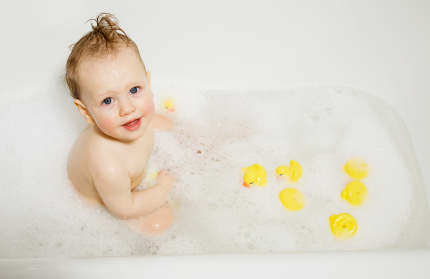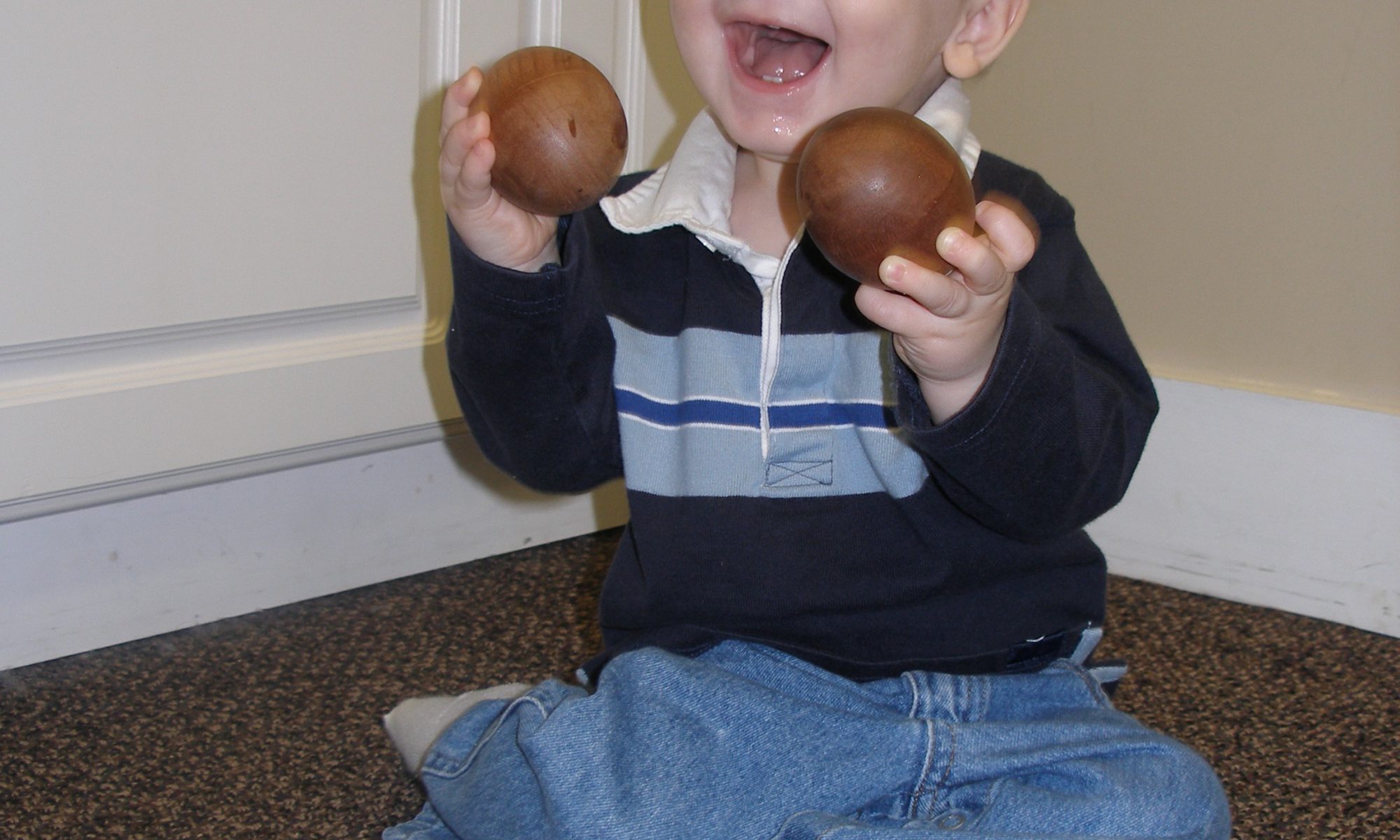The following post was shared from Kindermusik educator Joy Granade. 
Some days bathtime feels like a chore, just one more part of the day you have to slog through to get the kids into bed, so you can crash. However, over the years it’s been amazing to watch the way my hubby has turned bathtime into a special ritual with the boys.
When my oldest was first born, my hubby proudly declared that he wanted the responsibility for bathtime. At first I wasn’t quite so sure as his early attempts were filled with some crazy misadventures. But before long I saw what a treasure bathtime was quickly becoming for my two (and now three) guys.
Proud Kindermusik mama that I am, I have seen in action how important rituals and routines are for helping babies, toddlers, preschoolers (and even grownups) find order and peace in their days. Not only have I seen them ease tantrums and tears, but I’ve also watched how they help us as a family calm and connect to one another. So, here are a few lessons I’ve learned from watching my sweet hubby at bathtime with the boys:
Give yourself time. When you don’t feel rushed, you both can be really present in the moment, which helps you make bathtime a bonding experience but also helps your little one feel relaxed and ready for bed.
Bathtime can be playtime. And of course for little people, playtime is always learning time. Whether you just grab a small colander, funnel, and measuring cups from the kitchen or you buy bathtoys, water play is a blast and a great way to learn. Watch how things sink or float. Talk about colors. Count. Play with textures – washcloths or even sponges cut into shapes or animals. Identify letters (foam ones are fun to stick on the wall).
We even used bathtime to teach a lot of sign language (DUCK, WATER, BATH, IN, OUT, MORE). Our favorite toys: ducks, stacking cups with holes that water can drip through, and now dinosaurs we can bathe. I’ve also heard of families bringing baby dolls or cars to share in the bath as well.
Consider using your hands. Touch is one of the most important ways we connect. A long time ago my hubby declared that he didn’t want to use baby washcloths much, though they are sometimes necessary. He knew that the special act of washing our boys with his bare hands communicated love and affection in a way that a washcloth couldn’t.
Add a little massage. With our littlest babies in the Village classes, we often share a time of baby massage. Bathtime is the perfect time to extend this activity. Whether you just give a little extra squeeze as you scrub your little one down, or you pull out some lotion for a sweet massage after you’ve toweled off, this kind of loving, intentional touch aids in digestion, relieves colic, promotes health, and might even help your child sleep.
Even after we quit giving massages at bathtime, I continued to give backrubs and leg and arm massage as we snuggled before bed when I knew our kids were having a hard time settling down for bedtime.
And of course…make music! Because transitions have always needed a little extra creativity in our household, we made up a bathtime song years ago. (It sounds like the old Batman TV show theme but uses the word Bathtime instead of Batman. Only my hubby.) But it grew from there. Before long we had songs we sang to calm crying babies as we toweled them off, chants for counting “piggies” in the bath (“This little piggy…”), and even songs about scrubbing in the tub. Sometimes we just sang our latest favorite Kindermusik songs or even made up new silly songs. It never matters what we sing, it always makes bathtime easier – especially when it’s been a long day.
Time to get out of the tub! And last but not least, all good things must come to an end, and with bathtime, sometimes the fun is so great that getting out is hard. That’s why it’s a good idea to come up with a few rituals for getting out.
Over the years ours have evolved. For our babies, we sang lullabies to help ease the transition. Then as the boys grew, they counted down 5 minutes, 3 minutes, 1 minute till time to get out of the bath. Soon they were making choices about how to get out of the tub – stomp like a dinosaur out of the bath or jump like a monkey.
But the best was what happened on the other side of the tub wall. Whether they hid under the towel, played peekaboo, or pretended to be butterflies wrapped in a towel cocoon, there was always a big snuggle at the end of bath – my favorite part!
Special thanks to Kindermusik educator Joy Granade for sharing this post from her blog, Kindermusik with Joy. Information about Joy’s Kindermusik program in Kansas City, MO, can be found at her blog.



